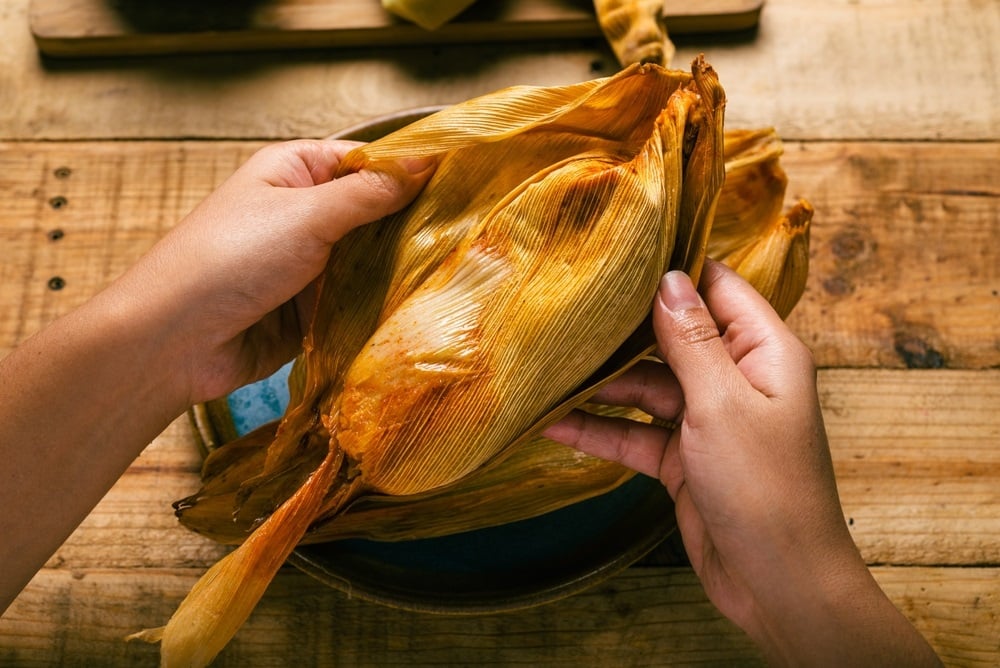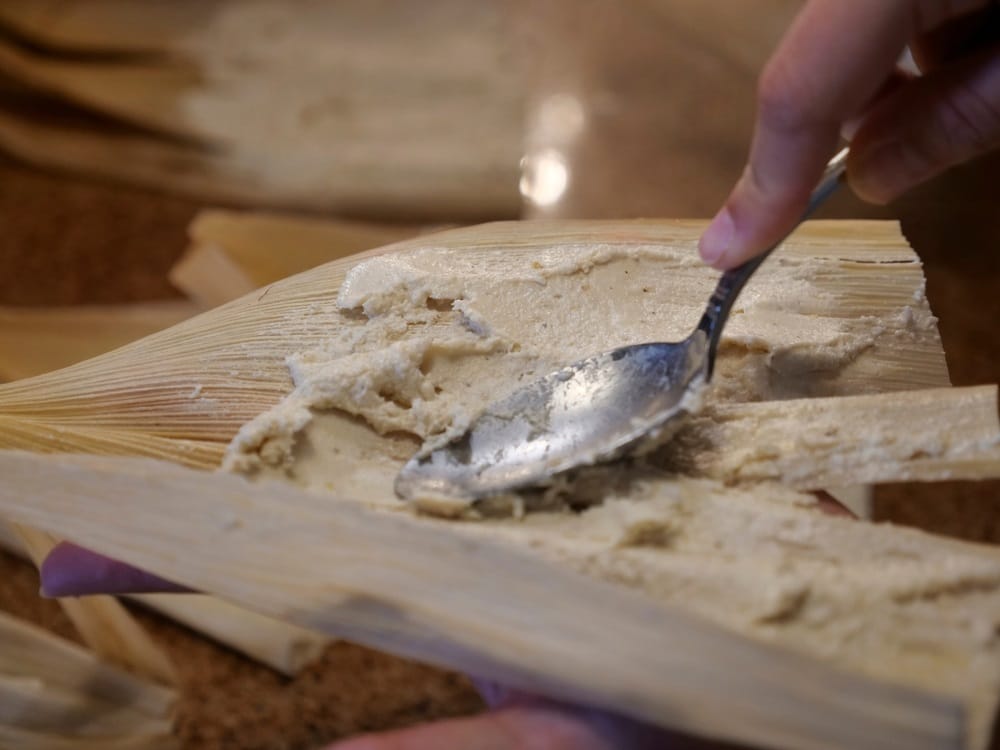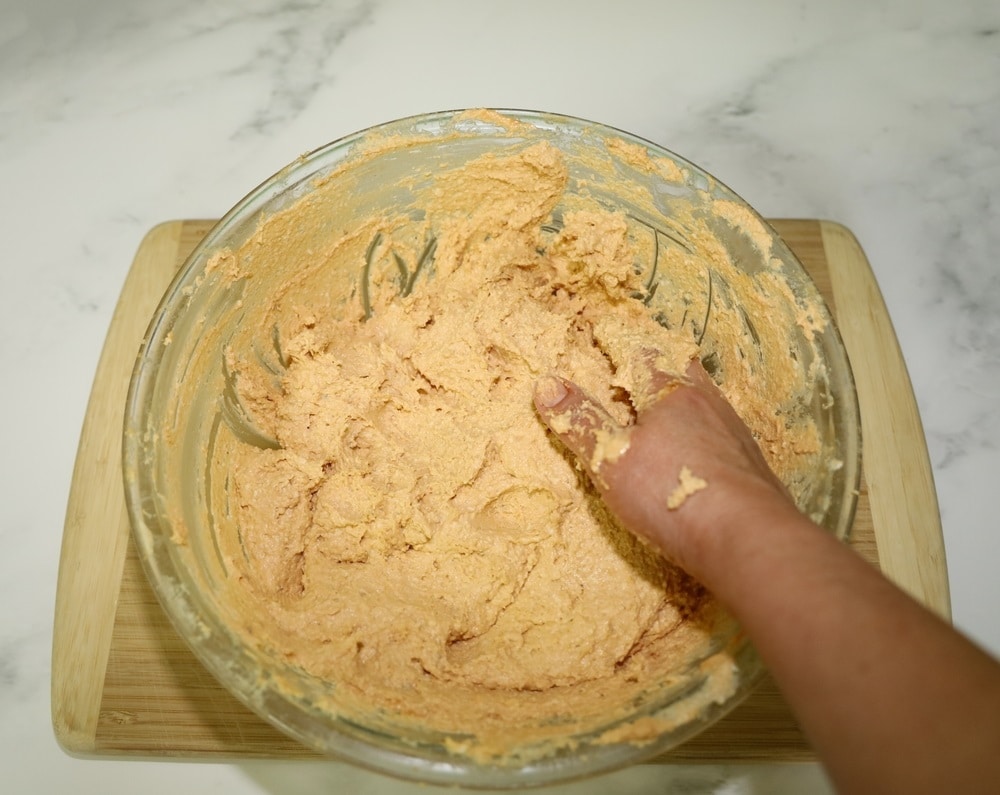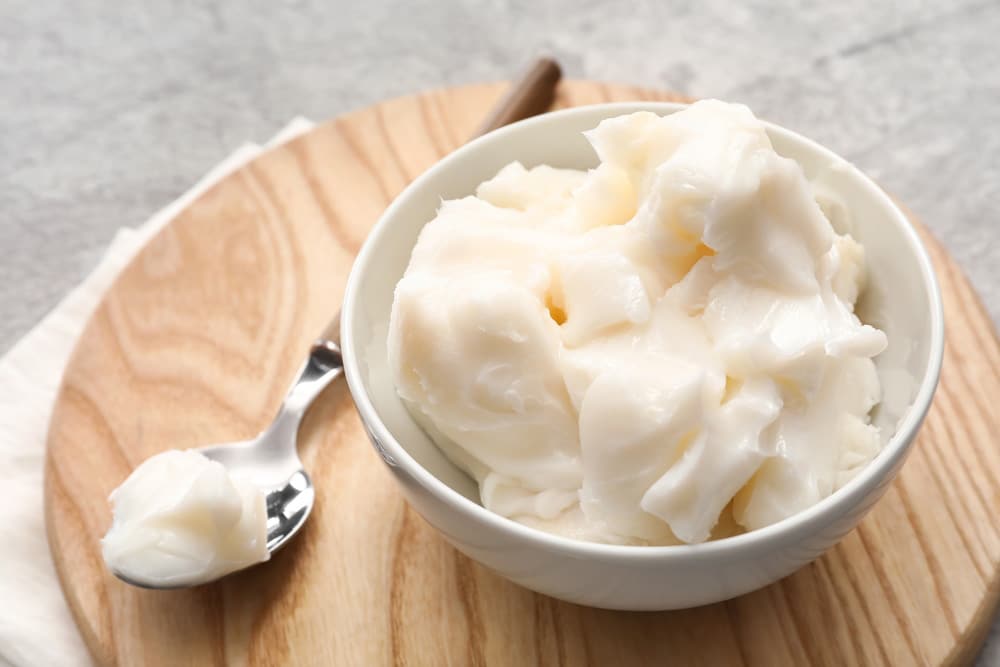
Tamales are an ancient dish that may even have been served as early as 100 AD! Today, they’re a Mexican staple that has become popular in many parts of the world.
What are tamales made of?
Traditional tamales are made from a corn-based dough called masa. Masa is made with specially treated, or “nixtamalized” corn. The treating process alkalizes the corn, making it soft, tender, and flavorsome.
The dough is spread onto corn husks, banana leaves or something similar then folded around a pre-cooked meat or vegetarian filling of any kind such as spiced chicken, beef, or beans and cheese.
The whole thing is firmly wrapped in this outer layer before steaming. To serve, the outer layer is unwrapped (it’s not eaten). Tamles are probably the original wraps of the culinary world!
The modern Mexican tamale fillings are made with meat, vegetables, chilies, fruits, or anything that has a harmonizing flavor. The tamale wrapping is often a corn husk, but a banana leaf or piece of baking parchment paper can also be used.
Tamales, once considered the food of the gods, should have a salty, savory, spicy moistness that is very satisfying as a main dish.
Why Are My Tamales Dry?
Dry tamales are unpleasant to eat even if served with moist accompaniments. The dough and the meaty filling are both supposed to be juicy, tender, and moist.
Keep reading because we are going to provide you with some reasons why your tamales may have turned out dry as well as tell you how to fix it in future batches.
1. Incorrectly hydrated masa
The masa (dough) is one of the most important components of the tamale. It provides substance to the dish as well as a coating to hold the moisture of the filling inside.
Masa dough can be tricky to make so if you are a beginner, find a good recipe and video and follow them carefully. Alternatively, find a Mexican grandmother to teach you!
As a guide, the raw dough should be soft and moist enough to spread like jam, peanut butter, or hummus. It should never be hard, crumbly, or tough.
It has a completely different texture from ordinary bread dough. If yours is like this, add some more water or stock plus a teaspoonful of melted lard, butter, or even some oil.
Mix it well … you can’t really overmix masa dough so blend everything together thoroughly. Use a blender to make it easier. If the dough sticks to your hands, it is too wet.
A simple technique to check the consistency of your masa is to scoop a spoonful of it and drop it into a bowl of cold water. Your masa is considered perfectly moist if the masa lump floats on top of the water instead of sinking to the bottom.
If you really struggle to get your masa the correct consistency and it always turns out dry, consider buying ready-made dough.
To give you an idea of the required amounts of each ingredient for perfectly moist masa, here’s a sample ingredient list:
- 1 1/2 cups soft lard or vegetable shortening
- 4 cups masa harina
- 1 teaspoon baking powder
- 2 teaspoons salt
- 1 tablespoon dried onion powder
- 1 teaspoon dried chili powder
- 1 tablespoon ground cumin
- 4 cups warm chicken stock or water
As you can see, there is quite a substantial amount of liquid provided by the lard and the stock. This makes a moist, spreadable masa.
2. Lard not mixed enough
We have said it before, and we’ll say it now, masa should be hydrated enough to spread like jam on a slice of toast. If not, add an extra teaspoon or two of lard and mix until your masa is light and fluffy.
But just adding lard and mixing it for a few seconds is not enough, you have to mix it well for several minutes until everything is incorporated. To make a light, fluffy, and airy masa, the lard used for hydration is not liquid.
For moist, creamy tamales, we use solid, softened, room-temperature lard. According to most traditional tamale recipes, you’re required to mix the masa mixture for at least ten minutes. This is where using a food processor or stand mixer is a big help.
If you feel that there is already enough lard, add more stock, a little at a time, until you arrive at the correct consistency.
3. Not enough fat
While we all know that we shouldn’t be eating too much fat, you can’t make good masa without it. Don’t be tempted to cut down on the quantity of lard, butter, or other shortening in the recipe.
4. Premade masa
We won’t deny that masa-making is a slightly difficult, time-consuming process for beginners.
However, the only way to make a light, fluffy, and airy masa is to take your time and blend the best ingredients properly at home yourself. Without a light, fluffy, airy masa, you’ll never get a creamy, moist tamale.
Premade masa is unreliable because you don’t know how it was made or how much work was put into making it. Though no fault of your own, poor-quality premade masa may be the reason for your dry tamales. Homemade is always better!
5. Filling is dry
Your masa may be perfect but if your filling isn’t moist and even juicy, the tamales will be dry. So, pick a filling recipe that seems juicy, like beef, chile black bean and cheese, etc.
6. No sides
A good side dish or sauce can cover a multitude of sins. Serve your tamales with generous amounts of salsa, guacamole, sour cream or ranchero sauce, or all of these!
They compliment the tamales beautifully and add interest, moistness, and flavor to the meal for little extra effort.
To End
We hope that by using our tips, your next batch of tamales will be moist and delicious. Don’t give up … this delicious Mexican dish is worth mastering!


